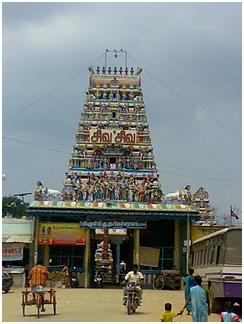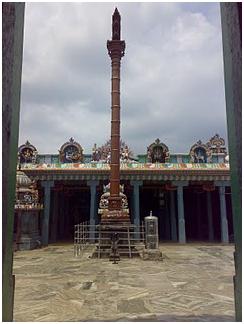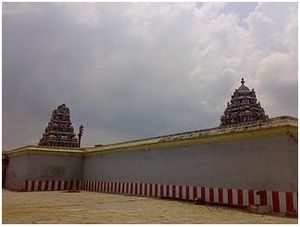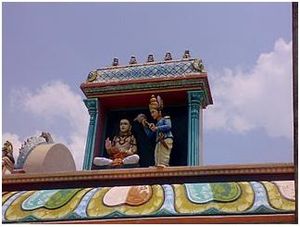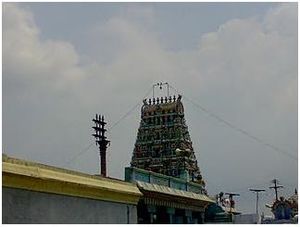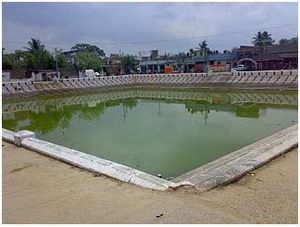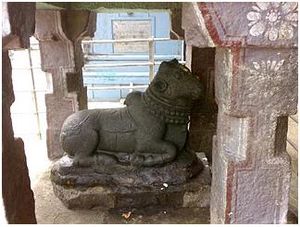Kunrathur Sri Naageswarar
Kunrathur has an ancient temple for Lord Shiva which is over 800 years old. The main deity is Sri Naageswarar and Goddess Sri Kamakshi. This temple was built by the great tamil poet Sri Sekkizhaar who wrote the popular ‘Periya Puranam’. Sekkizhaar was born in Kunrathur itself. Once King Kulothunga Chozha II wanted to test his intellect and asked him many questions. Sekkizhaar answered the king perfectly and the king was both pleased and amazed at his prowess.
The king made Sekkizhaar his minister at his capital. Sekkizhaar was an ardent devotee of Lord Shiva and was regularly worshipping Him at Thirunaageswaram near Kumbakonam. During later stages, Sekkizhaar built a temple for Lord Shiva at Kunrathur which is very similar to the Thirunaageswaram temple. He installed the deity (Shiva Lingam) with Naagaabaranam (serpent as an ornament) around the Shiva Lingam and named the Lord as Sri Naageswarar. This temple is also popularly called as Vada Thirunaageswaram.
This temple is considered the Raahu Sthalam among 9 Navagraha Temples of Chennai (or Thondai Mandalam). The Naagar around the deity is considered the ‘Raahu’ for worship. Parihaarams (remedial worship) for Raahu are done here, especially during Raahu Kethu Peyarchi and also during Raahu Kaalam (4.30 pm to 06.00 pm) on Sundays. The temple is large and wonderful. The vast praakaarams add beauty to the temple. Sri Naageswarar is seen facing east and Goddess Sri Kamakshi is facing south. Sri Sekkizhaar also has a separate shrine inside the temple.
A magnificent Dwajasthambham is located on the eastern side of the temple, straight to the entrance. Sri Nandhigeswarar is seated in a small stone mandapam and is facing east towards the sanctum. Sthala Viruksham (holy tree) for this temple is ‘Shenbaga Maram’ (Michelia champaca L) and Theertham is ‘Surya Pushkarani’. Surya Pushkarani is very large and beautiful which is seen outside the temple on the south eastern side. The temple definitely showcases the dedication of Sri Sekkizhaar toward Sri Naageswarar.
How to Reach[edit]
Kunrathur is located about 25 kms from Chennai city. One can reach Kunrathur by taking the road off GST road from Pallavaram. One can also take the road from Porur junction leading to Kunrathur.

